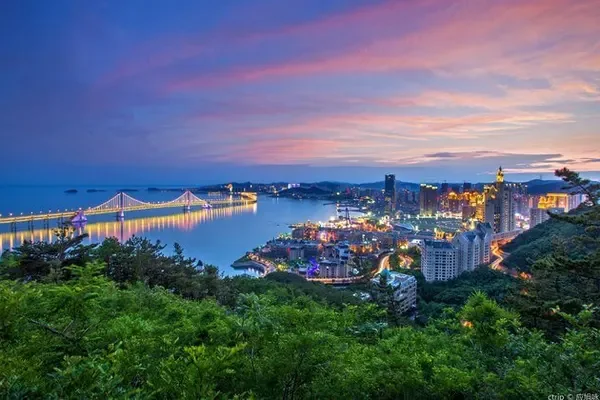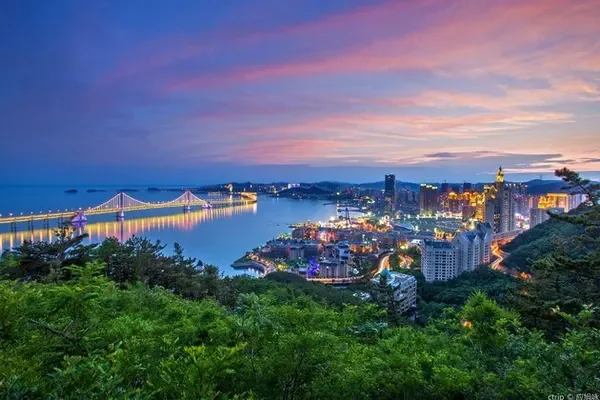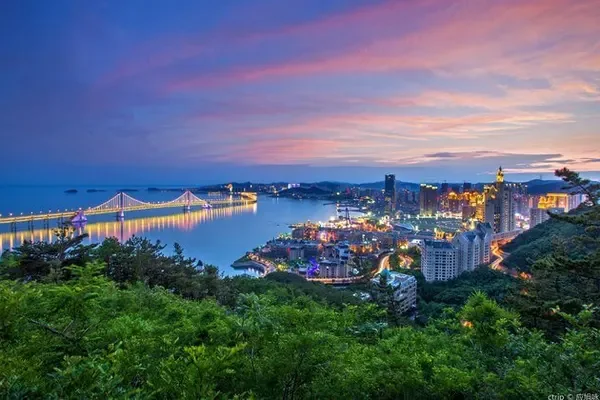China is so big, I want to visit it. Take you to a place you have been or have not been to.
Id Kah: The "Mecca" of Muslims in Central Asia
The place that best embodies Xinjiang's ethnic customs is Kashgar, known as the "Pearl of the Silk Road". The most conspicuous and Islamic architectural style in the center of Kashgar is the symbol of Kashgar City - Id Kah Mosque.

"Id Kah" means "festival, happy square" in Uighur. A mosque is a place for Muslims to hold religious activities and a "place of prostration" for Muslims to worship.
Id Kah Mosque (commonly known as the Great Mosque) is located in the west of Id Kah Square in the center of Kashgar. The Great Mosque is the largest mosque in Xinjiang and the largest mosque in the country. It is one of the three most influential mosques in Asia. For those who have never been able to go to the Holy Land of Mecca all their lives, coming to the great temple in Kashgar, Xinjiang to worship is the purpose of this life. "Why go to Mecca when you have come to Kashgar", there is also such a saying.
Tickets for Id Kah Mosque in Kashgar in August 2008: RMB 20

The origin of the Id Kah Mosque is also full of vicissitudes. This was originally the Maza (cemetery, also known as Gongbei) left by the Arab general Qudibo. The ruler of Kashgar was also buried here after his death in 1442 AD. The descendants of King Kashgar built a small mosque here to commemorate it. After 1538, people expanded the temple and became a large temple for gatherings. In 1798, Guli Rena, a Uyghur female Muslim in Yingjisha, died of illness on the way to Pakistan. She had no children. People used her travel expenses to expand the temple and named it Id Kah. Another Uyghur rich woman, Zhuolipiya Khan, also donated money to expand the temple and purchased 600 mu of land as the property of the temple. After that, after more than 200 years of several constructions and expansions, in addition to the addition of temple rooms, greenhouses, bathhouses, and minaret towers, the temple gate and worship hall were also built, and the layout of the whole temple was re-planned, forming the existing size and grandeur.

The architecture of the Id Kah Mosque is a combination of Arabic and Uighur styles. The main entrance faces east. The beige gate tower is 12.6 meters high, and the sky blue arch is 4.7 meters high and 4.3 meters wide. The Arabic "Quran" is engraved on the top of the gate. The "Bunker Tower" (also called minaret) with asymmetric doors on both sides of the gate tower is 18 meters high and is the place where imams (Islamic clerics) call Muslims to worship. The body of the tower is made of carved ceramic tiles with colorful and delicate patterns. There is a summoning tower at the top of each tower. Every day at dawn, the imam climbs up to the tower five times (Muslims pray five times a day) and calls loudly to wake up sleeping Muslims to pray (now also uses loudspeaker equipment). The bronze crescent held high on the roof is an important symbol of Islam.

After entering the gate, there is a huge tree-lined yard, separated by sidewalks, with flowers, trees and pools in the yard. There are 36 scripture halls in a row on the north and south walls respectively, for bishop A Gen to preach scriptures; the chapel is on a high platform in the west of the temple, divided into inner hall, outer hall and promenade; it can accommodate 6,000 to 7,000 people to worship at the same time .

The eaves of the corridor are very spacious, supported by 158 light blue carved wooden columns, which divide the ceiling into several squares and arrange them in a network shape. The caissons are painted flowers or geometric figures, which are exquisitely made and colorful. hall.


Muslims must take off their shoes when entering the eaves of the corridor. There is an arched deep niche in the center of the main wall of the inner hall, and a bridge-like throne with steps is placed in the niche. Every time of worship, the big mullah stands in the altar to receive scriptures, and on Fridays or festivals, he also stands on the steps of the throne to preach and preach. Muslims enter the temple regardless of their status, high or low, and enter in order. Everything external is stripped before religion, and everyone can listen to the imam explaining the Qur'an equally. Everyone lines up behind the big mullah and prays in the direction of Mecca (west in our country).

At the entrance of the inner sanctum, we can look up and see a painting. The place on the picture is the holy place of Islam - Mecca, which is the place where all Muslims worship and yearn for. Islam does not set up idols, and when it is time to worship, just pray in the direction of Mecca.

There are more than 3,000 people who come to the temple to worship every day. On the afternoon of Friday "Juma Day" (Juma Day), Muslims perform the most solemn "Naimaz" (worship) within a week. Tens of thousands, but women (including Muslim women) and non-Muslims are not allowed to enter at this time, and all other times are open to the public.

There are three major festivals for Muslims: Eid al-Fitr (Eid al-Fitr) and Eid al-Fitr. During the annual "Eid al-Adha" (Eid al-Adha) festival, Muslims from all over Xinjiang come here. They kneel down the entire mosque, the square in front of the temple, and even the roads and streets in front of the temple. There are more than 100,000 people. Many devout Muslims, inspired by their faith, come to pray to Allah.

The early morning worship of the Eid al-Adha is the largest one of the year. All adult men have to go to the local mosque to participate in the worship. The scene can be said to be very spectacular. After the gathering in the square, the musicians climbed to the top of the gate of the Id Kah Mosque, knocked on the Nagra (iron shell drum) and played the Suonai (suona). The men danced the passionate shaman dance.

Women are not allowed to participate in worship and square dance activities. They need to prepare fried sanzi and various snacks in advance before the festival, and prepare sufficient food for relatives, friends and guests from afar during the festival, fully displaying Craftsmanship and housekeeping virtues.


The prominent status of the Id Kah Temple is not its size, but it is the place where Muslims in Xinjiang "gather", it is not only the center of religious activities, but also the place for mass entertainment songs during the Eid al-Adha and Rouzi festivals. The epitome of Islamic culture in southern Xinjiang.
The Id Kah Mosque is also the most famous Islamic institution in Xinjiang for spreading Islamic culture and cultivating talents. Many high-ranking Islamic clerics and scholars from the north and south of the Tianshan Mountains and Central Asia graduated from here, and there are more influential poets, writers, historians and translators who also received strict education here in their early years. academic training.
For more content, please pay attention to Lotto Leyou: Sohu Account / NetEase Account / Baijia Account / Today’s Headlines / Daily Express / Yidian News / Zhihu / Sina Weibo


